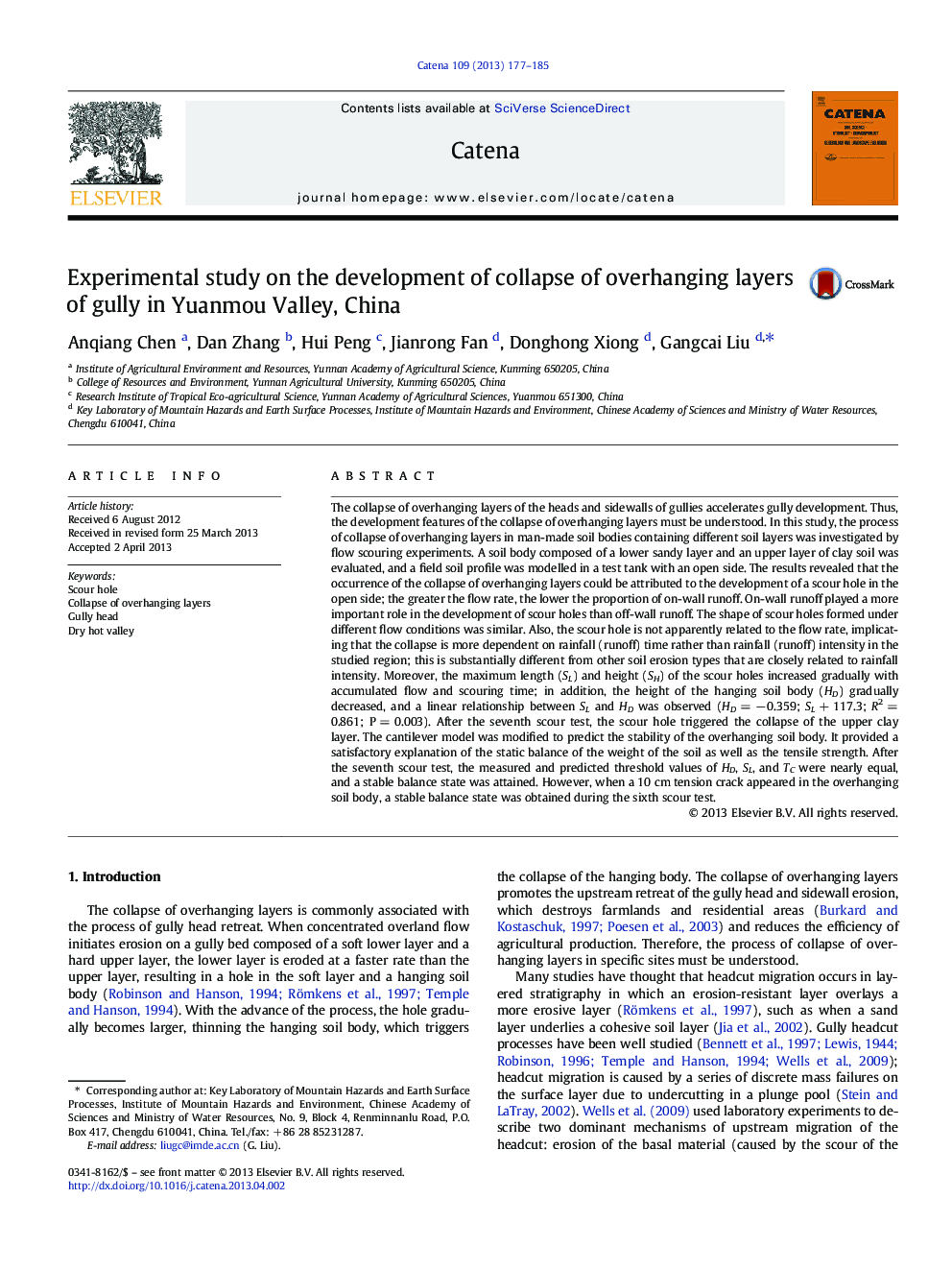| Article ID | Journal | Published Year | Pages | File Type |
|---|---|---|---|---|
| 4571582 | CATENA | 2013 | 9 Pages |
•A new system was designed to observe the process of overhanging layers collapse.•The scour hole development in soil body caused the overhanging layers collapse.•On-wall flow is more important in the development of scour hole than off-wall flow.•Cantilever model provided a good explanation for stability of overhanging soil layers.
The collapse of overhanging layers of the heads and sidewalls of gullies accelerates gully development. Thus, the development features of the collapse of overhanging layers must be understood. In this study, the process of collapse of overhanging layers in man-made soil bodies containing different soil layers was investigated by flow scouring experiments. A soil body composed of a lower sandy layer and an upper layer of clay soil was evaluated, and a field soil profile was modelled in a test tank with an open side. The results revealed that the occurrence of the collapse of overhanging layers could be attributed to the development of a scour hole in the open side; the greater the flow rate, the lower the proportion of on-wall runoff. On-wall runoff played a more important role in the development of scour holes than off-wall runoff. The shape of scour holes formed under different flow conditions was similar. Also, the scour hole is not apparently related to the flow rate, implicating that the collapse is more dependent on rainfall (runoff) time rather than rainfall (runoff) intensity in the studied region; this is substantially different from other soil erosion types that are closely related to rainfall intensity. Moreover, the maximum length (SL) and height (SH) of the scour holes increased gradually with accumulated flow and scouring time; in addition, the height of the hanging soil body (HD) gradually decreased, and a linear relationship between SL and HD was observed (HD = − 0.359; SL + 117.3; R2 = 0.861; P = 0.003). After the seventh scour test, the scour hole triggered the collapse of the upper clay layer. The cantilever model was modified to predict the stability of the overhanging soil body. It provided a satisfactory explanation of the static balance of the weight of the soil as well as the tensile strength. After the seventh scour test, the measured and predicted threshold values of HD, SL, and TC were nearly equal, and a stable balance state was attained. However, when a 10 cm tension crack appeared in the overhanging soil body, a stable balance state was obtained during the sixth scour test.
